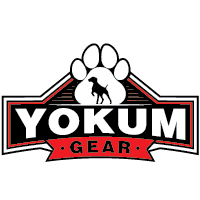Understanding the Basics of Toilet Training Your Puppy
Toilet training a puppy is a crucial aspect of pet ownership and can be a rewarding experience for both the pet and owner. Proper toilet training ensures a clean and hygienic home environment while establishing a bond of trust and understanding with your new furry friend. It requires patience, consistency, and a positive attitude. Here are some essential tips to make the process smoother.
1. Establish a Routine
Puppies thrive on routine, and establishing a consistent schedule is key to successful toilet training. Take your puppy outside to their designated toilet area:
-First thing in the morning.
-After meals.
-After waking up from naps.
-Before bedtime.
Regular intervals, approximately every 2 hours, will help them understand when it’s time to go outside.
2. Choose a Designated Toilet Area
Select a specific spot in your yard or nearby outdoor area where you want your puppy to relieve themselves. Consistently taking them to the same place helps them associate the area with the act of toileting, making it easier for them to understand where they should go.
3. Use Positive Reinforcement
Positive reinforcement is one of the most effective training techniques. Praise and reward your puppy immediately after they successfully go to the bathroom in the designated area. Use treats, verbal praise, or a favorite toy to show your approval. This immediate feedback helps them make the connection between the action and the reward.
4. Supervise and Confine
When you are toilet training your puppy, constant supervision is essential. Keep an eye on your puppy whenever they are active and not confined to their crate or playpen. Look for signs that they need to go, such as sniffing the ground, circling, or whining. If you cannot supervise your puppy, confine them to a small, puppy-proofed area, or use a crate. Puppies naturally avoid soiling their sleeping area, which helps in the training process.
5. Be Patient and Consistent
Toilet training takes time and accidents are inevitable. Avoid scolding or punishing your puppy for accidents, as this can create fear and confusion. Instead, clean up the mess calmly and thoroughly to remove any lingering odor that might attract them to the same spot again. Consistency in your training approach and understanding that accidents are part of the learning process are vital.
6. Use a Cue Word
Introduce a cue word or phrase, like go potty or do your business, when you take your puppy to their designated toilet area. Repeating the phrase consistently will help them associate it with the act of relieving themselves, eventually prompting them to go on command.
7. Gradually Increase Freedom
As your puppy becomes more reliable in their toilet habits, gradually increase their freedom around the house. Start with one room and slowly allow access to other areas, observing and supervising them to prevent accidents.
8. Handle Setbacks Calmly
Even with the best training, setbacks can occur. Changes in routine, environment, or health can cause temporary regressions. Handle these setbacks with patience and return to more frequent trips outside and close supervision.
Conclusion
Toilet training your puppy is an essential part of their early development and requires a blend of patience, consistency, and positive reinforcement. By establishing a routine, supervising your puppy, and using positive reinforcement, you can effectively guide them through the process. Remember, each puppy is unique, and their training journey may vary. Enjoy the experience and celebrate the milestones along the way!

